As part of the Urban Synthesis project, the “Metabolic Systems: Energy” class delved into the study of renewable energies, specifically solar energy, to explore its potential implementation in the design of self-sufficient residential apartments. To achieve this goal, we utilized spreadsheets and data provided by the faculty, along with the Sunny Design website, to calculate the potential energy generation of photovoltaic panels.
Harnessing the Sun’s Power: Installing Solar Panels in Barcelona’s Mixed-Use Buildings
Installing photovoltaic (PV) systems on mixed-use residential buildings in Barcelona requires careful planning and consideration. Several factors are crucial, including the suitability of the rooftop, its orientation towards the sun, and compliance with local regulations.
Before installation begins, we conduct a thorough assessment to determine the ideal placement of PV panels. This assessment considers the building’s structural integrity and its potential for solar exposure. Using advanced software like PV Design Sunny, we precisely position the panels to maximize their south-west exposure (as ilustrated in Image 1). Additionally, we conduct a detailed shadow analysis through simulations to identify any potential obstacles that could impact energy yield. The results, shown in image 2, indicate that the panels are primarily located within the “green zone,” signifying optimal utilization of the building’s PV potential through proper orientation. The models that were considered are SMA Demo Poly 425W in vertical position.
Barcelona’s abundant year-round sunshine makes PV systems a wise investment for homeowners. These systems offer substantial energy savings, lowering your bills while contributing to a cleaner environment. But the benefits go beyond environmental impact. By utilizing smart energy management technologies like net metering and energy storage, you can store excess solar power for later use, further enhancing the efficiency and convenience of your system. This seamless integration ensures the system works in harmony with your existing household infrastructure.
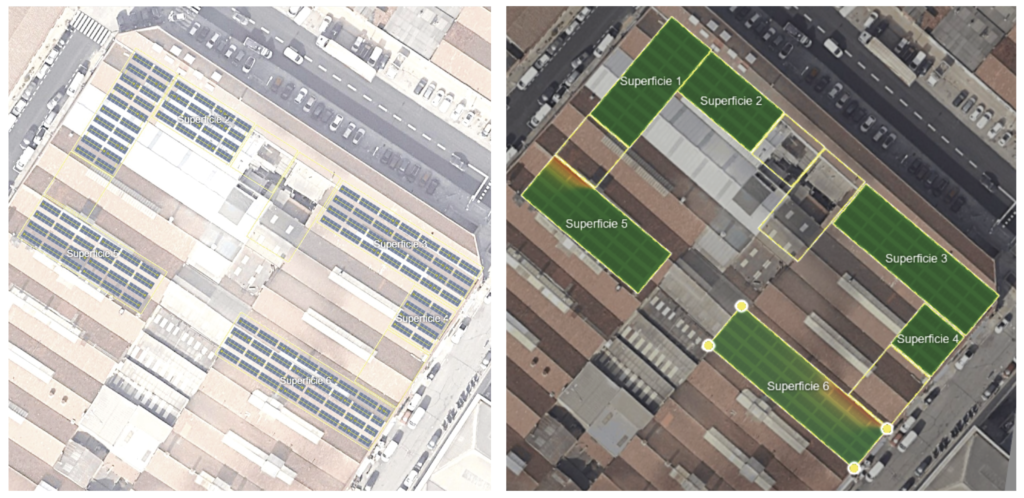
Image 2: Shadow analysis showing most of the areas green, which means there is almost no shade
In order to calculate the consume of the building, the building areas were divided according to the use and each area multiplied by the ratio that corresponded to it. The results are shown below, along with the Power required:
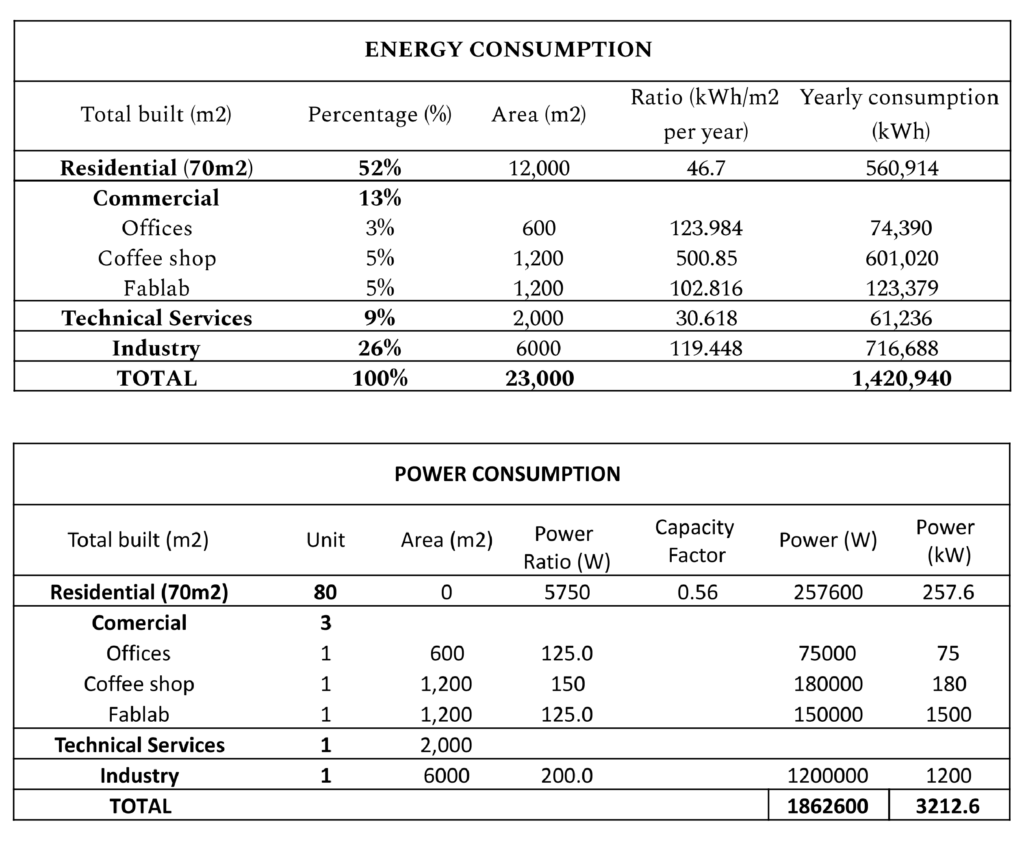
Table 2: Total yearly required Power
To determine if the solar panels on the roof could meet the needs of self-sufficient housing units, we compared the estimated annual energy consumption of 560.914 kWh to the anticipated energy capacity of the PV panels. It´s important to highlight that Housing values calculated do not differ neither circulation, technical and common areas.
The report generated by Sunny Design provided the following informations:
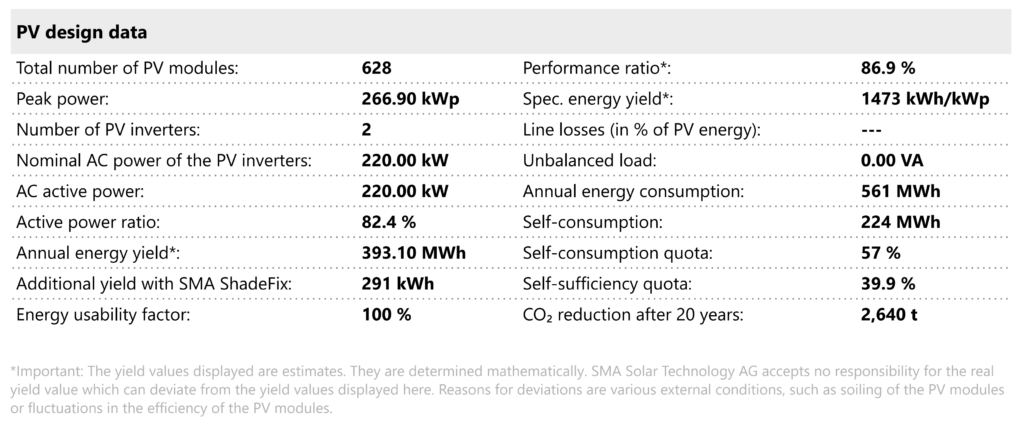
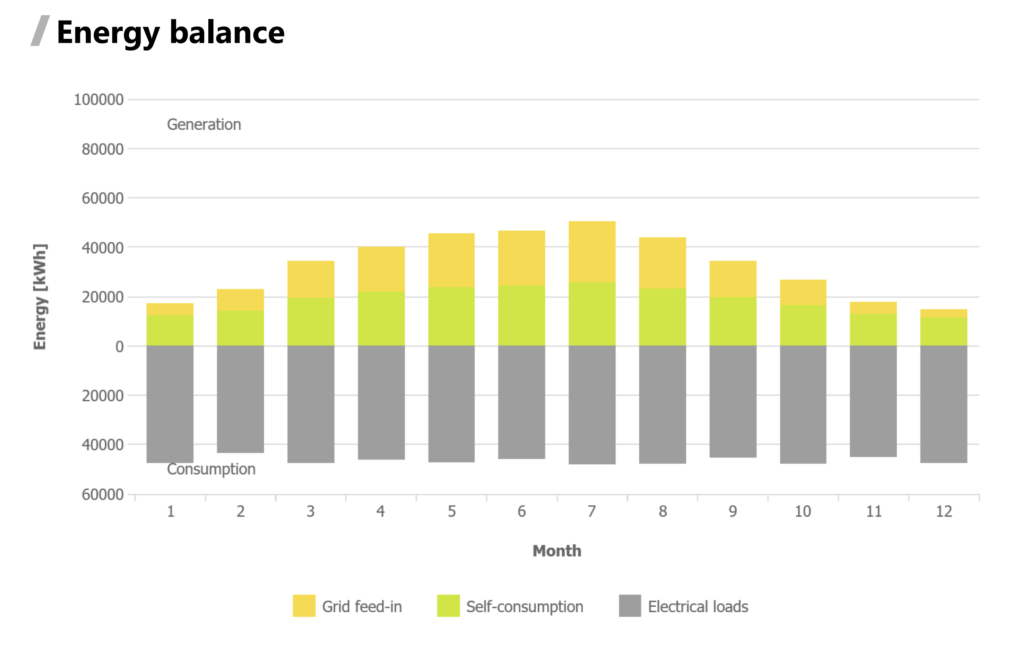
Previous calculations showed that annual consumption is 561 MWh. The table 3 gives an overview of production and consumption energy, showing an annual energy yield of 393.10 MWh and self-consumption of 224 MWh. This result indicates that the building is not self sufficient, which gives a self-sufficiency quota around 40%. Another important aspect is the difference that occurs between demand (which is more intense during mornings and evenings) and production (that only occurs with sunlight), which creates a scenario for either storing extra energy for further use or selling for the city greed, which is represented in the yellow bars of the Graph 1.
La Obertura Building and its energy strategies
PV electrical energy distribution within residential buildings in Barcelona follows a hierarchical model, prioritizing onsite consumption over grid export. Generated electricity first serves immediate household needs like lighting, appliances, and HVAC systems. Any surplus energy is either stored in onsite batteries (suggestion is an ice-storage) for later use or exported to the grid, thereby contributing to the local energy ecosystem.
With the planned energy supply concept, which uses only electricity as the final energy source, the electricity balance from the annual electricity demand and local electricity production (through on-site photovoltaics) can be used to show what proportion of the final energy demand is covered by renewable energy generated locally, i.e. on the property itself (“on-site”). As the diagram shows, the currently planned amount of photovoltaic
systems on the building roofs
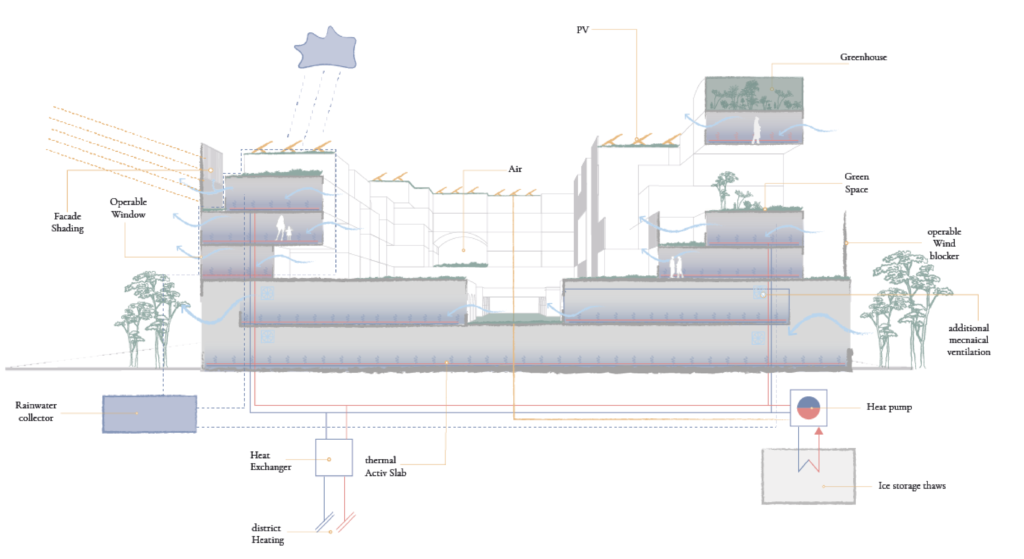
“Solar energy potential” fully covers the electrical energy requirements. The energy for heating and cooling of the building’s will be provided by the district heating/cooling network from the Besos waste plan and storage we are proposing an ice-storage combined with a heat pump.
The architectural aproach of implementing the solar panels is by creating a geen and healthy biotope around it. Combining PV panes with greenroofs not only supports biodiversity, but also prevents the PV panels of overheating (Image 4) an other option is to use the panels on top of the greenhouses (Image 5). Promoting plant growth and creating recreational spaces for the residence we will implement additional Panels on Pergalas providing Shading on the wakable rooftop terrasses (Image 6).


